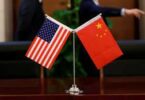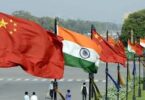Despite the secretary commerce claim about the steady surge in exports, Pakistani currency is losing value against US dollar and other hard currencies due to constantly widening current account deficit. The credit ranking agency Moody has cautioned that further depreciation of Pakistani rupee (PKR) will decrease Pakistan’s credit affordability. The central bank will then face the difficult challenge of anchoring inflation at moderate level. The government’s debt affordability would also likely weaken further as the Pakistan’s one third debt is denominated in foreign currency, said Moody.
Public debt has increased enormously over the last 10 years whereas the size of GDP has shrunk in real terms. In 2007 debt to GDP ratio was less than 50 percent; it went up to 64 percent from 2008 -2013, and further gone up to 68 percent in 2017, bordering on the redline. The rising trend may continue if corrective measures are not taken. The existing ratio is higher than the t median estimate for B- rated sovereignty of 55 percent to GDP for 2017. In the fiscal year 2016-17 majority of debt indicators deteriorated because the government has constantly violated the Fiscal Responsibility and Debt Management Act 2005. Pakistan urgently needs foreign loans for balance of payment support and debt servicing. The external sector has not performed well over the past three years. In the three years trade policy 2016-18 annual export target was set $ 35 billion but it could not be achieved and the exports remained stagnant at $ 23 billion. After failing to meet the goal in three years trade policy, the government will try to achieve the target in the new trade policy with a time frame of five years 2019-23.
A number of factors are at work that inhibits the growth in exports. Pakistan’s primary commodities and finished goods have lost the competitive edge because of their high price and low quality. The production cost is abnormally high due to sky high tariffs of electricity and gas. The government gives export subsidy on sugar and wheat but is not willing to extend the same facility to the exporters of rice, sports goods, surgical goods, light engineering products and ready made garments. Secretary Commerce Division Younas Dagha is holding consultative sessions on the next trade policy with the business community. However, the input from the chambers of commerce and industry of Khyber Pukhtunkhwa and Gilgit Baltistan is yet to be included in the strategic trade policy 2019-23. These provinces have a great potential of exports of a number of items which include fresh and dry fruits, gem stones and marble products. Pakistan has great potential to improve its marble industry by introducing modern technology in mining and cutting of marble. The global market of marble and granite is $ 62 billion but our share in the world market is less than one percent. Pakistan’s share of marble products can be substantially increased by quality improvement and value addition for which proper incentive from the federal government are urgently needed. Marble mining licenses should be given subject to the condition of using state-of-art technology by the mining contractors. The ambitious target of $ 36 billion can be achieved only when number of exportable items is increased and new markets are explored. Besides this production cost is lowered by bringing down the electricity and gas tariffs. Quality of exportable goods also needs significant improvement.






